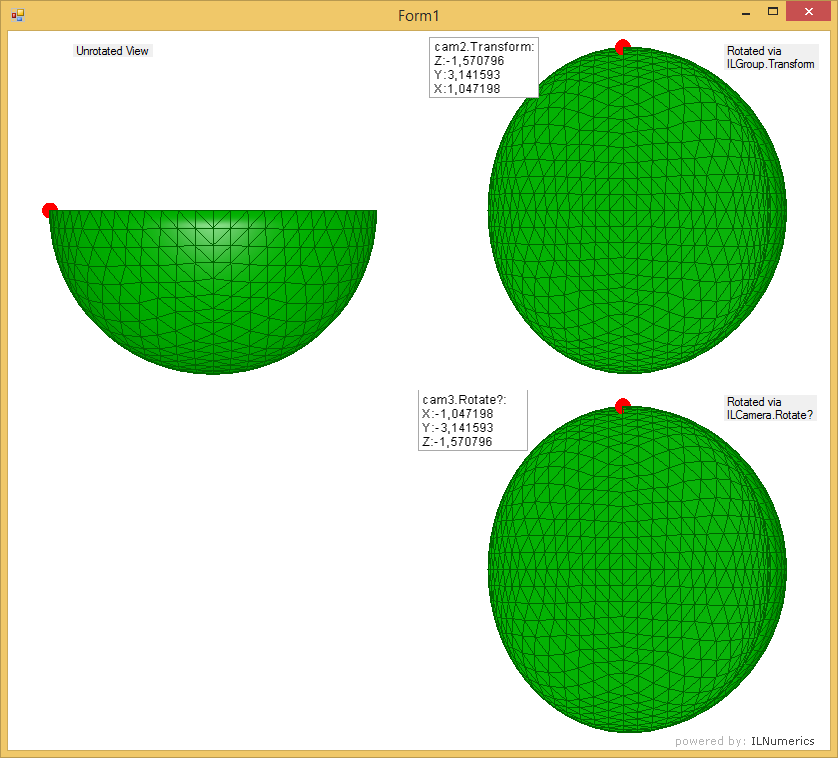Two options for rotating scenes

The example shows both major options for rotating objects: Rotating the camera to produce the _impression_ of rotating the scene. And
rotating the scene or parts of it. The example creates 3 cameras in different quadrants of the panel. Each shows the same content (a
green hemisphere with a big red dot at the edge). Each displays the content rotated in a different manner:
The upper left quadrant shows the hemisphere unrotated. Both, camera and model are shown as they are created by default.
The upper right quadrant rotates the _model_ by applying several rotations to the ILCamera.Transform property, which is derived from ILGroup.
In the lower right quadrant the hemisphere was rotated by rotating the camera itself. Similar transformations have to be applied in order
to get the same result as for the upper quadrant. The transformations, however differ in sign and order.
While producing similar results, using one method or the other is not the same: if you double click on the lower hemisphere
(the one, which was rotated using the camera) the camera position is reset and the hemisphere rotates back to initial state. Double clicking
on the upper right hemisphere on the other side, does not reset the hemisphere, because the corresponding camera has not been involved into the
rotation.
Last modified: August 25 2021 18:29
